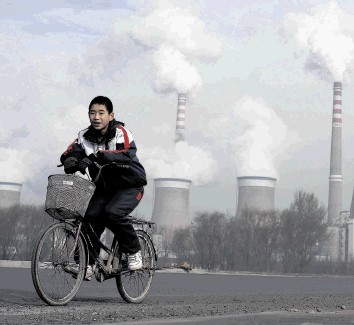
Ageing coal-fired power is increasingly replaced by renewable energy generation in the US and Europe. However, transitioning away from thermal coal will be complex and slow for Asian nations, particularly India and China, which make up 70% of global coal demand and face a steep rise in power demand.
Significantly, according to the latest report from S&P Global Ratings, the success of meeting net-zero targets for countries such as China, India, and Indonesia, hinges on the future economic and technical feasibility of carbon capture, usage, and storage (CCUS) technology.
“The economic realities in Asia Pacific mean that any significant reduction of coal consumption will prove challenging. Large Asian economies are experiencing a strong rise in electricity demand, which is set to continue over the coming decades to sustain economic growth. When it comes to meeting new demand, coal is still seen as the most affordable option for base-load power,” noted S&P.
“At the 26th U.N. Climate Change Conference (COP26) in November 2021, China and India were the two major holdouts on coal, agreeing only to phase down rather than phase out this fossil fuel. In China for instance, coal-fired generation will remain relatively flat and elevated this decade, although its share is set to reduce to 51% of power generation by 2030 from two-thirds today, with faster growth in renewables. In India, coal-fired generation will still expand substantially this decade to meet soaring demand,” added S&P.
Moreover, “Asia’s fairly new coal-fired generation fleet is another reason for its reluctance to turn away from coal. The average age of a coal plant in the US and Europe is between 40 years and 50 years, and most are now approaching the natural end of their useful life spans. In Asia, much of the fleet has been built in the last 10 years, making significant plant closures unlikely before 2030 at the earliest,” said S&P.
“The energy transition is also now more complex because of security of supply and geopolitical considerations, exacerbated by the ongoing Russia-Ukraine conflict. China, for instance, has declared that, although its decarbonisation efforts will continue, energy security is its first priority,” added the firm.
CCS may hold the key to long-term coal usage in Asia’s power sector, but without strong carbon pricing or policy mandates, CCUS technology is unlikely to be applied in power generation, predicted S&P.
Indeed, for CCUS technology to be competitive, it would need a carbon price of $40-$60 per ton of carbon dioxide (CO2), whereas Chinese carbon prices currently trade at less than $10 per ton. The International Energy Association (IEA) estimates the cost of CCUS technology varies widely between $40 per ton and $120 per ton of CO2.
“Financial markets are independently taking action on the energy transition, and often ahead of policymakers. The pool of funding for coal projects is shrinking, with an increasing number of governments, financiers, and investors devoting more attention to climate risks,” added S&P.
“Domestic bank funding is still available in China and India but, like all other funding channels, is steadily decreasing. With investor appetite diminishing, some coal projects are struggling to refinance, with access to capital–and not just its price–increasingly becoming an issue, heightening the risk that some assets may become stranded, or even default,” warned the credit ratings company.
Still, as Energy Voice recently reported, the coal plus renewables energy transition led by Asia Pacific’s largest growth markets – China and India – is gathering speed. Significantly, it is a lot cheaper than the natural gas plus renewables path followed by the EU and US to lower emissions.

